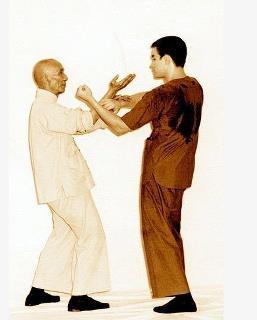Laap Sao in chi sao cycle
Posted By : Kevin Gledhill
Date: Nov 9, 2012
Laap Sao/Chi Sao cycle
Here are a few more words from a German martial arts forum (Kampfkunstboard) where Philipp offers a clear, simple explanation of the Lap Sao/Chi Sao cycle, and why we should’nt attempt to integrate punching techniques from other styles in this ving tsun specific exercise. He also talks a bit about why we don’t focus on hitting our training partners with 100 percent force du...
ring the exercise.
« Lap Sao, for example, serves to improve the coordination between the Jut and the vertical punch. The coordination between hips, elbows and the pull, moreover, serves the goal of bringing the power of the entire body behind one’s punches….necessary training especially for people of « weaker » stature.
At the same time we are training the ability to change or switch…if our attack is met with an obstacle or diverted, we seek to continue it. We are also learning about Bong Sao, which must be able to deflect like a Pak or Jut and be ready to punch, like Wu.
During the transitions (from Lap Sao) into Chi Sao I exchange forces with my student…each uses the force issuing from the other and re-directs it toward the ground, thereby building the necessary muscle connections (structure) for punching. Simultaneously, the powerful influence of these forces trains the upright position and balance. Punching speed is also enhanced through the correct exchange of force – which is important for short-distance punching (Lat Sau Chek Chung). In other words, we are primarily training our « punching source/structure »….and this we can not do with punching methods from other styles…not that easy to hear !
In Lap Sao / Chi Sao we avoid punching at our partners with full force for a very simple reason. The un-natural quality of the Ving Tsun punch (referring to the position of the elbow), the short distance involved, etc., require constant repitition as a conditioned behavior can be lost again relatively quickly. Consider the fact that, 24 hours a day, one has the elbows out, in other words in an un-typical Ving Tsun position. Training the elbows 2x a week for 5 minutes in the first form isn’t enough. It's a simple case of repetition/conditioning and has nothing to do with punching someones face in, and can not be learned with attacks from other styles.
Attacks from other styles have, in this part of Ving Tsun training, no place. »
-Philipp Bayer
Other articles by sifu


